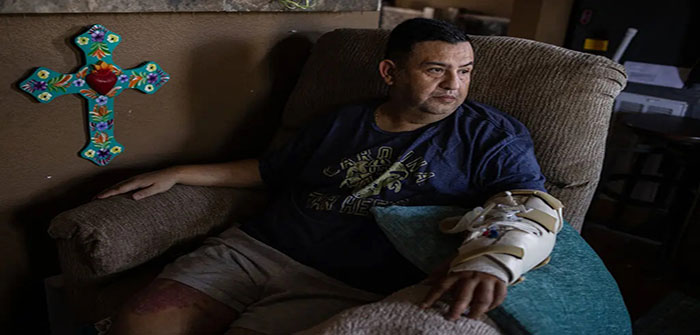
by Edgar Sandoval at The New York Times
The first shots came from the hallway outside the classroom. Arnulfo Reyes, a fourth-grade teacher at Robb Elementary School, quickly remembered the active shooter training he had rehearsed so many times and told his 11 students to lie under their desks and “act like you are asleep.”
A black shadow appeared at one of the classroom doors and a plume of fire flared from the tip of what looked like a rifle. Mr. Reyes felt a bullet piercing his arm, tearing off a chunk of flesh and bone. Then the gunman turned on the children. The rampage was so brutal and so swift, the teacher said, that he did not hear a single whimper from them as their bodies were shredded.
Mr. Reyes lay in a pool of his own blood for what seemed like an eternity until he heard police officers gathering in the hallway just outside the classroom door. His students lay silent, dead or dying; a few other children in an adjoining classroom were still alive, faintly calling for help. The officers will burst through and save us any minute now, he told himself. But the minutes ticked by, and no rescue came.
About a half-hour later, the gunman, sitting near where Mr. Reyes was sprawled on the floor, seemed to be taunting him. He leveled his gun at the teacher’s back and fired again.
“I think about it more and more. What could they have done differently?” Mr. Reyes said in an interview recounting the events of May 24, when a mass shooting at the school left 19 students and two teachers dead.
He described the agony that victims felt…
